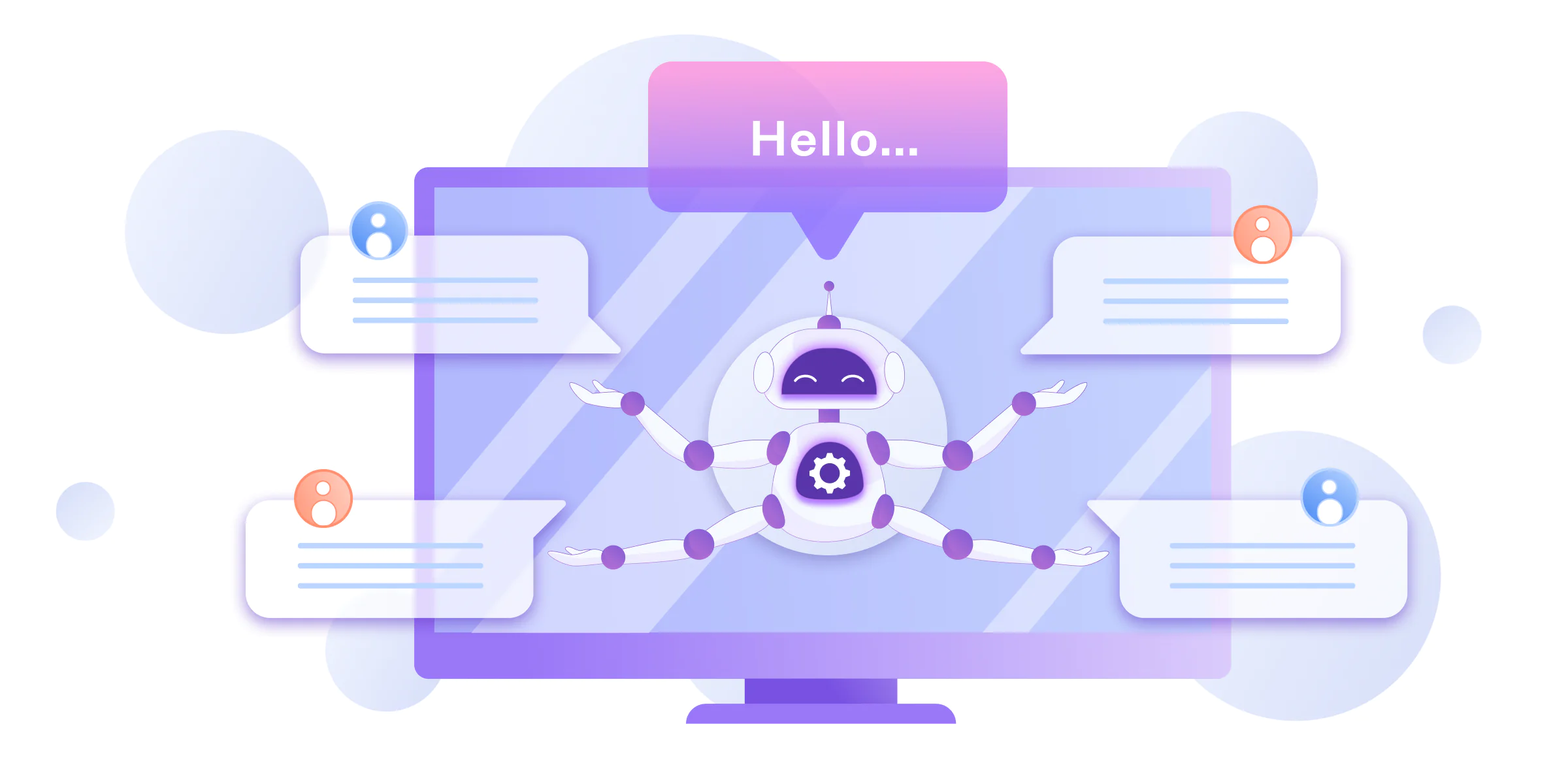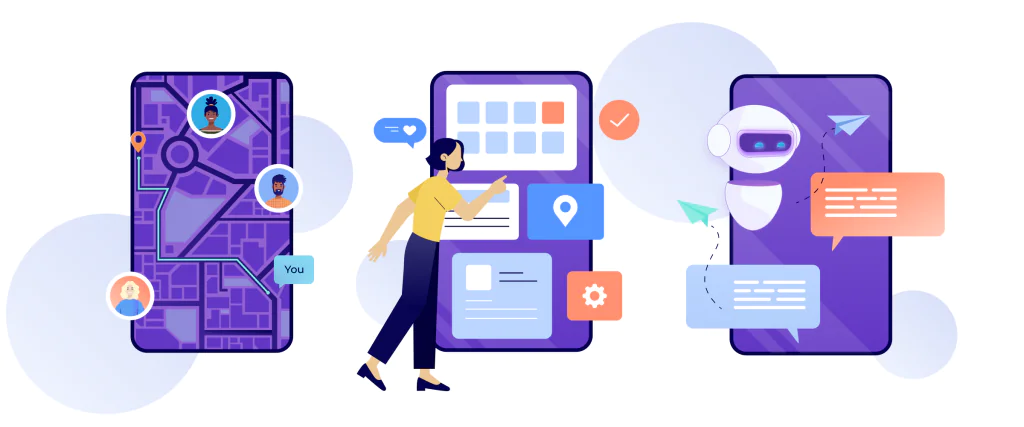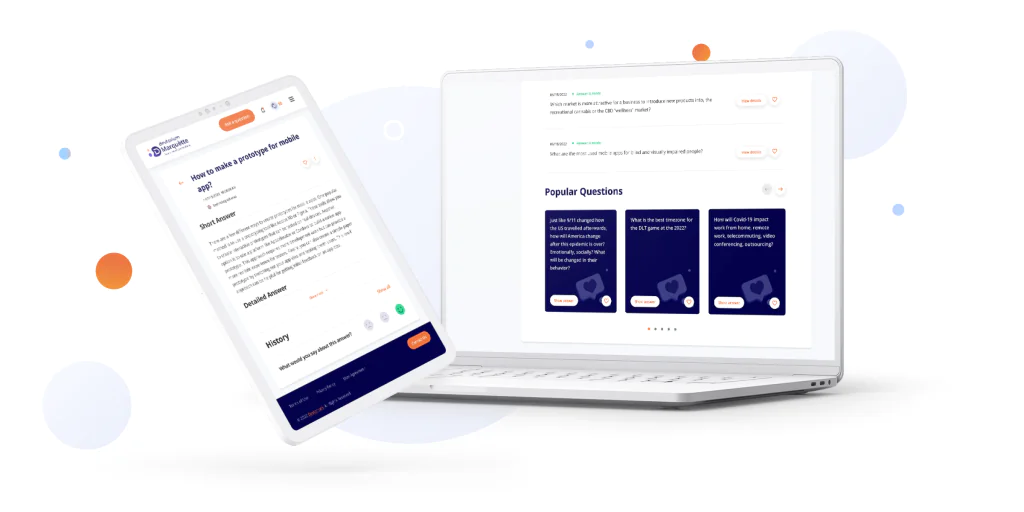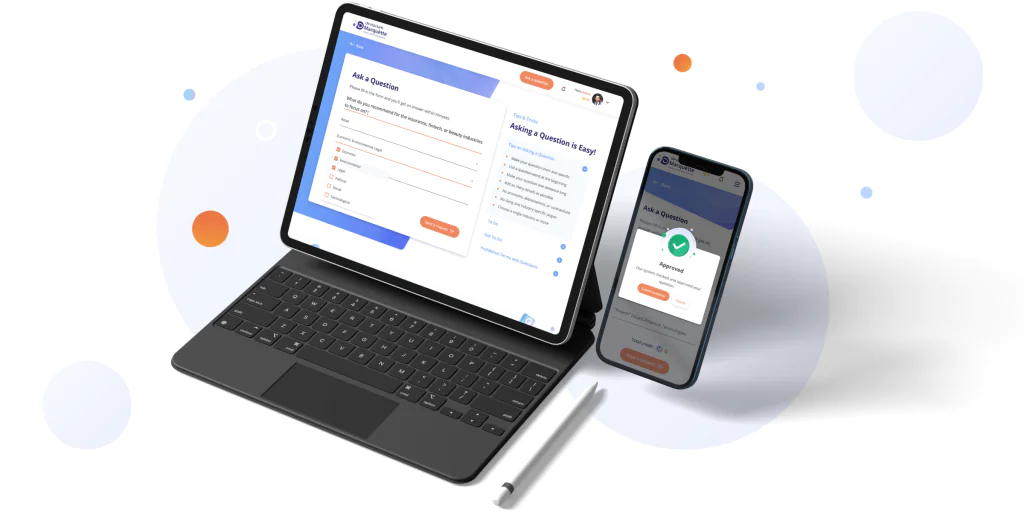Artificial intelligence software development is the rockstar of 2023. In fact, we could say that it’s the fastest-growing tech in the 21st century. Things can’t be any other way because the world is rapidly spiraling into a crisis of unprecedented proportions. However, various applications of AI can slow, stop, and even reverse this descent. It’s only a matter of targeting AI-driven software development correctly.
We will see it growing in the directions listed below in the upcoming year.
Artificial Intelligence Software Development in 2023: General Outlook

AI for sustainability
According to Gartner, sustainability is the leading trend for all technological development in 2023. Therefore, it’s no surprise that we will see many applications of AI in various sustainability projects.
In this case, the uses of AI are incredibly versatile. We will use AI processing power for calculating and predicting current environmental issues, sustainability rates, and potential project success. AI will also be widely applied in solutions that aim to reduce the carbon footprint of everything from smart homes to manufacturing enterprises.
AI-driven software development in predictive analytics
The artificial intelligence software development sector that creates predictive analytics platforms will keep growing and improving rapidly. It’s because the pandemic and the supply chain crisis it triggered made the global economy extremely volatile.
Therefore, many businesses must rely on predictive data analytics to survive. But, unfortunately, the level of volatility isn’t going to go down soon. So, better data analytics capabilities are a must-have to help businesses deal with disruptions.
Moreover, accurate AI-powered analytics solutions are necessary to monitor businesses in real time. It’s essential to understand how adequate your company’s response to the current situation is. Leaders can use this data for risk management and crisis prevention.
AI-driven software development has unparalleled data analytics capabilities. In addition, the demand from all industries will make this the hottest trend for AI software development companies.

Artificial intelligence software development for automation
One of the most significant issues of the 21st century is the global shortage of workers in many industries. Everyone, from laborers at manufacturing plants to farmers to office workers, seems to be quitting their jobs. Moreover, finding replacements is extremely difficult and prohibitively expensive.
The solution to many labor shortage-related issues is AI automation of multiple tasks. The power of artificial intelligence can be applied everywhere, from HR recruiting research and candidate selection to robotizing manufacturing chains.
In 2023 we will see more AI-driven software development in the areas of automation that include:
- Chatbots
- Data processing and analysis
- Menial jobs automation
- Data entry and collection
It’s also important to note that automation is geared not only toward substituting for the workers who aren’t there. In addition, it’s an essential tool companies can use to improve the quality of work. Therefore, they can increase employee retention. Today’s qualified professionals don’t want to waste their work hours on mind-numbing repetitive tasks. Therefore, automation that frees your teams’ time for solving high-level problems can bring you a competitive advantage as an employer.
However, there is another side to this issue. The number of specialized workers is decreasing, but the unemployment rate is growing. This situation breeds resentment in certain groups that believe ‘machines are taking away jobs’.
Those same arguments existed during the start of the industrial revolution. As we can see, machines haven’t replaced people then. They simply moved humanity, as a whole, to a new level. It’s the same now. Humans are desperately needed in many industries. However, they need to be better educated and qualified to complete tasks that machines cannot.
Low-code/no-code artificial intelligence software development
There aren’t enough qualified software engineers in the world today. One of the solutions to this issue is the continuing rise of low-code/no-code AI platforms. Not only do they enable experienced professionals to save time. These platforms also allow non-professionals to become developers.
AI is unable to replace developers completely. Also, these platforms require multiple highly skilled and experienced devs to create and maintain. However, despite all this, these platforms can greatly help numerous companies. Right now, they are in high demand among small businesses and startups.
Low-code and no-code tools will continue getting more popular. Using this type of AI-driven software development for further business automation is a fantastic strategy for the coming year. Enterprise-level businesses, in particular, will leverage no-code development to its maximum. This way, they can boost efficiency and cut costs on development.

AI software development for content creation
According to research, about 30% of all outbound content from large companies and organizations will be AI-generated by 2025. Because the demand for content is enormous, human creators simply cannot keep up with the required speed.
Of course, there is a big part of creative content that AI can’t replace. However, machines can easily handle writing the majority of formal and marketing messages.
Note that this is relevant for all types of content, including videos, images, music, and text. You can check out one of the foremost successful projects that gained popularity in 2022, Midjourney. It’s an extraordinary visual content generator.
Another example is Marquètte, an AI content generator developed by Devtorium. It’s an AI content writer that can create many kinds of texts, from blog posts to essays. It produces original content that can greatly help marketers and copywriters save time.
Artificial intelligence software development for security
The importance of digital security is growing with every passing moment. AI has unparalleled capabilities in identifying and fixing weaknesses and abnormalities. Therefore, it’s no surprise that much of AI’s development trends will lie in the area of cybersecurity.
Solutions that help users take control of their data and protect it from invasion will be as in demand as solid firewalls. Also, solutions that run systems checks and analyses for any threats are already popular and quickly evolving.
AI-driven software development in healthcare
AI software has already transformed the healthcare industry. However, this trend will continue in 2023 and beyond. Enterprise-level systems require AI for better management, especially where complex database and finance management are concerned.
Also, there are AI-powered software solutions for individual healthcare consultations, vitals tracking, etc. All in all, due to its extreme complexity and need for connectivity, the healthcare industry is one of the most lucrative places for AI tech to grow. So, we will keep seeing more developments in this field.
Moreover, we will see a higher level of automation and robotics being applied in healthcare. Already there are successful projects on prosthetics and neurological implants. They can give hope and increase the quality of life for millions of people.

Computer vision AI development
Computer vision is one of the foremost AI-powered technologies we will see growing in 2023. It is quite widespread already, powering various solutions, from self-driving cars to the aforementioned healthcare apps.
We will see computer vision AI protocols becoming more sophisticated. Therefore, artificial intelligence software development that uses this technology will be capable of completing more tasks with a higher accuracy level.
In addition, this tech’s data analysis and response quality will improve, increasing its applications. This, like nothing else, has the potential to take artificial intelligence software development to the next level quite fast.
Bottom Line: The Time of Artificial Intelligence Software Development Has Come
We live in an era where custom software development can give any business a crucial advantage in a competitive market. The power of AI in this context is staggering. The level of automation it can provide, even at the most basic AI applications, can revolutionize entire industries.
These processes are happening already, and in 2023 the demand for AI-driven software development will only increase. We face multiple problems globally, from the supply chain crisis to the shortage of qualified labor. AI might not be able to solve these issues entirely yet. However, it certainly can help combat them and help businesses survive and prosper in these challenging conditions.
If you are interested in learning more about how AI-powered tech can help you or seek to create your own solution, contact us anytime!












































